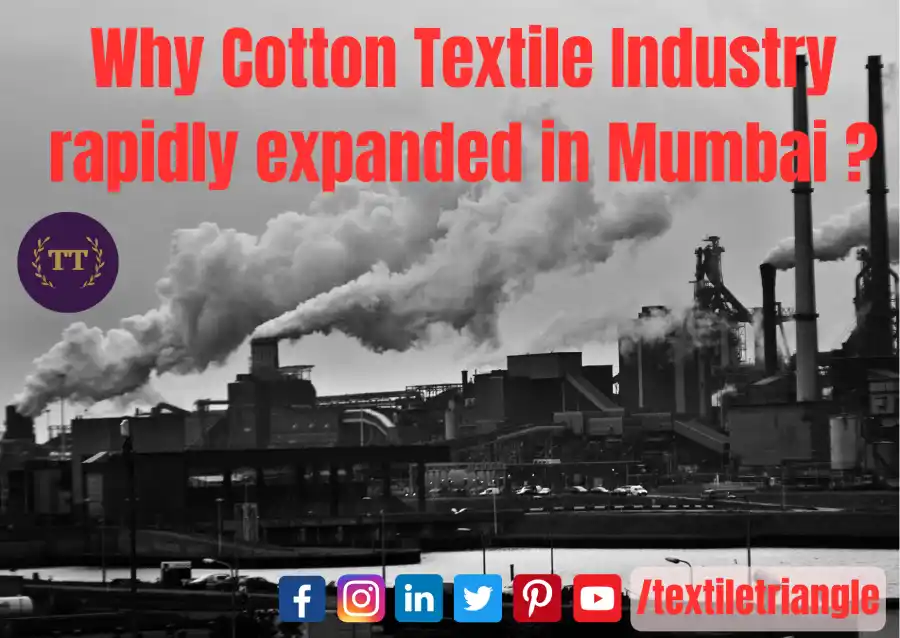Table of Contents
Introduction
The cotton textile industry in Mumbai, India, has long been synonymous with excellence, innovation, and sheer scale. Renowned worldwide, Mumbai’s dominance in the cotton textile sector has been fueled by a remarkable period of rapid expansion. Over the years, the city’s textile industry has evolved into a formidable force, driving economic growth and contributing significantly to India’s global trade footprint. Fascinating story behind the exponential growth of Mumbai’s cotton textile industry, exploring the key factors that propelled its unprecedented rise to prominence. From strategic geographical advantages to technological advancements and socio-economic factors, a comprehensive understanding of these forces sheds light on the industry’s remarkable success and enduring legacy.
The cotton textile industry in Mumbai has experienced remarkable growth and rapid expansion over the years. Once a modest industry, it has transformed into a thriving hub, attracting attention from both domestic and international markets. This article delves into the factors that contributed to the exponential growth of the cotton textile industry in Mumbai, unraveling the secrets behind its success.
Geographical Advantage
Mumbai’s strategic location played a pivotal role in the rapid expansion of the cotton textile industry. Situated on the western coast of India, it provided easy access to raw materials such as cotton from nearby cotton-growing regions like Gujarat and Maharashtra. The proximity to ports facilitated efficient import and export of cotton and finished textiles, enabling the industry to flourish.
Skilled Labor Force
Another crucial factor in the expansion of the cotton textile industry was the availability of a skilled labor force in Mumbai. The city has a long history of textile production, dating back to the colonial era. Over time, generations of workers developed expertise and specialized skills in various aspects of textile manufacturing, including spinning, weaving, and dyeing. The presence of a skilled labor force ensured high-quality production and contributed to the industry’s growth.
Infrastructure Development
Mumbai’s robust infrastructure played a significant role in the rapid expansion of the cotton textile industry. The city witnessed substantial investments in transportation, power supply, and industrial infrastructure, providing a conducive environment for textile mills to operate. Improved road networks, railways, and ports streamlined the movement of raw materials and finished goods, reducing logistics costs and enhancing efficiency.
Entrepreneurial Spirit and Capital
Mumbai’s vibrant entrepreneurial ecosystem and access to capital were instrumental in the industry’s rapid growth. The city attracted visionary entrepreneurs and industrialists who recognized the immense potential of the cotton textile industry. These pioneers established large textile mills, leveraging their business acumen and financial resources. The availability of capital and the willingness of investors to fund textile ventures fostered innovation, expansion, and modernization within the industry.
Government Support and Policies
Supportive government policies played a vital role in the expansion of the cotton textile industry in Mumbai. The government implemented various measures to encourage textile manufacturing, including tax incentives, export subsidies, and infrastructure development initiatives. These policies incentivized investment in the industry, boosted production, and promoted exports, ultimately leading to its rapid growth.
Technological Advancements
Advancements in technology played a significant role in the expansion of the cotton textile industry. Mumbai embraced technological innovations, such as modern machinery, automation, and mechanization, which enhanced production capacity and efficiency. The adoption of new spinning and weaving techniques, along with improved dyeing and printing methods, enabled manufacturers to meet increasing demand and produce high-quality textiles.
Market Demand and Globalization
The growing demand for textiles, both domestically and internationally, fueled the rapid expansion of the cotton textile industry in Mumbai. As Mumbai’s textile mills gained recognition for their quality products, they attracted buyers from various parts of India and overseas. With the globalization of trade, Mumbai emerged as a key player in the global textile market, meeting the demands of fashion brands, retailers, and wholesalers worldwide.
Conclusion
The rapid expansion of the cotton textile industry in Mumbai can be attributed to a confluence of factors, including geographical advantage, skilled labor force, infrastructure development, entrepreneurial spirit, government support, technological advancements, and market demand. The industry’s growth has not only contributed to the city’s economic development but also generated employment opportunities and fostered technological progress. As Mumbai’s cotton textile industry continues to thrive, it remains an epitome of success and serves as an inspiration for other textile manufacturing hubs globally.
Frequently Asked Questions | FAQs
Why Mumbai is famous for cotton textile industry?
Mumbai is famous for its cotton textile industry due to its strategic location near major cotton-growing regions in India, access to ports for international trade, historical significance in textile production, and the presence of skilled labor and infrastructure for manufacturing and processing cotton.
What were the main reasons for the growth of the cotton textile industry?
The growth of the cotton textile industry can be attributed to factors such as the availability of raw materials, technological advancements in spinning and weaving, colonial trade policies, investment in infrastructure like railways, and the abundance of skilled and cheap labor.



Drapes are held answerable for giving more fresh blocking and privacy. But curtains find the money for the same features as drapes. So, the functionality of both is the same as each additional. Both of them are easy to get your hands on in rotating designs and colors. Four levels of lightning are based on the subject of some things. Like the density of the fabric, how much buzzing is coming inside, and new factors. The curtain textile sourcing house all levels are satisfied. These are discussed in the considering section: